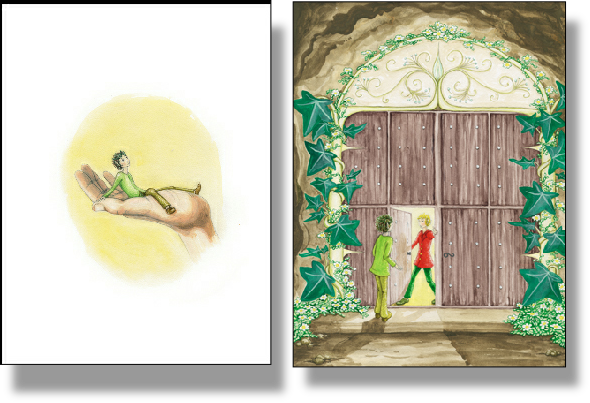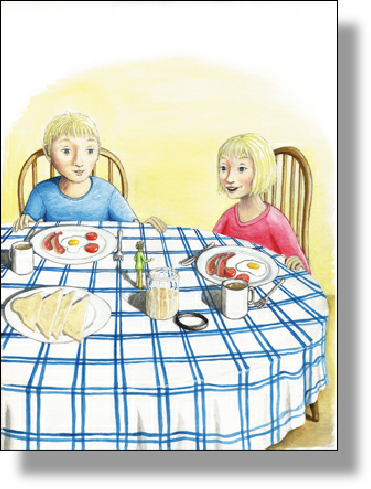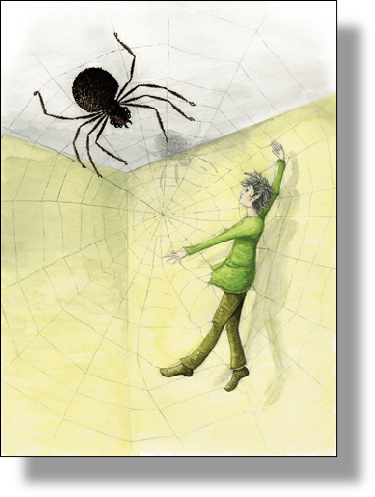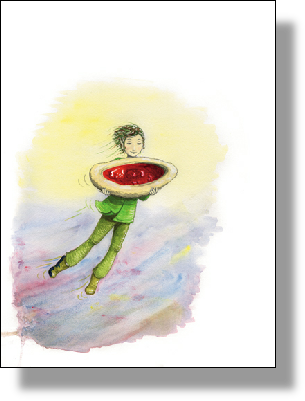


Woodsy
The original story has a simple plot which I follow:
Biddlekin, a young, rebellious and ‘ne’er-
AUTHOR’S PREFACE
This tale is freely based on Hilda Adshead’s ‘The Idle Fairy’, illustrated by
Anne Rochester, published in 1926 as part of Warne & Co’s Welcome Series for young
children. Recently I read it again out of curiosity since every now and again quite
by chance I am reminded of something in the story. I realised then that like so
many well-
Such source material is undoubtedly a product of its time. The children, Harry and
Mabel, are cared for by an all-
So here is a ‘fairy’ figure out of place in a human household, learning the hard way that he must return to his own kind and adapt to their disciplines. . But once he has achieved this, he returns stealthily and tactfully to repair some of the destruction brought about by his malicious abuse of transformation spells he had not learned how to reverse.
I follow the pattern of this narrative with its neat and entertaining plot, though I have written in a way that should appeal to a slightly older age group than the original, and hopefully to adult readers as they read it to their children. In line with this I have developed the characters of my children, John and Lisa, who are several years older than Harry and Mabel, rather more ‘streetwise’, and recognisably contemporary, though no less excited by a small intruder who promises to wield special powers. And while the visiting ‘fairy’ has many of the character traits of Biddlekin, his background is more specific and complex.
I avoid the term ‘fairy’, except when human characters use it for want of a better
word. Although Hilda Adshead implies that her ‘fairies’ are at best industrious and
purposeful, and that a dropout is the exception, the word has become associated with
diaphanously-
Woodsies, as explained early in Chapter 1, are a branch of this race of beings with a specific ‘folklore’ identity and a corresponding behaviour pattern and purpose. Leaflag the renegade woodsy shares Biddlekin’s fear, stupidity and arrogance, but these are made more palpable in my version. Both have stepped badly out of line, first by failing to prepare for the tasks of their tribe’s calling, and secondly by coming into contact with humans, not for a serious, mature purpose, but because their foolish behaviour has left them stranded and with few other choices.
As in my previous verse fantasies I have chosen to narrate, in a free verse medium. The standard and predominant line is composed to have six main natural stresses, for example:
‘Gét a móve ón or élse we’ll bé in tróuble!’
I am not sure if this has advantages or not, though readers who have made recordings of WISH and RAINBOW find it has given them guidance with pace and dynamics. But it is the way I have become used to writing narrative, and to honing down my expression to essentials. Sceptics maintain it’s a waste of ingenuity or makes no difference to them, and publishers are irritated by the oddities of presentation they have to deal with! In this case, especially as there is so much mundane dialogue, I have experimented with turning some chapters into prose; but I was unhappy with the result, and so were my first readers.
My illustrator, Caroline Ward, chose her subjects freely, and she did not see a copy of the original story until long after her own work was finished. She has shown considerable understanding of the spirit and intention of my narrative, and added dimensions to a number of decisive moments and turning points in the tale. I have found her approach most supportive, both in her perceptive comments, but also through her discovery of subtle sources of drama and colour that surprised me into a new awareness about my own work.
Michael Tolkien
November 24th, 2013




My verse narrative, Woodsy, available from New Generation Press and Amazon
in hardback, paperback and Kindle download, is based on , ‘The Idle Fairy’, a lost tale for young children by Hilda Adshead (1926)
I make more of the anti-
Woodsies can take on any human shape,
and have appeared in larger and finer forms
than we can ever hope to have, though mostly
they just need well-
to care for plants that like wood-
They are mainly practical, wise, and helpful,
but all families have misfits and trouble-
and sometimes young woodsies like Leaf-
won’t grow up and have to learn the hard way.
Woodsies have no wings. They just have to think
to be in another place. Some people who know
their haunts and have quick eyes may have seen
flashes of light and taken them for shiny wings.
My step-
Caught by the spider
Surprise visitor at breakfast
Stealing a jam tart
Moment in Lisa’s hand
Shut out of the Winter Palace